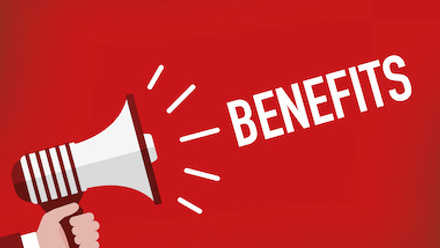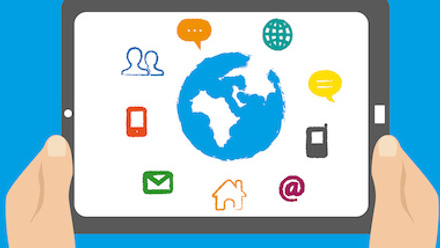How to use people data to enhance your benefits communications and drive engagement

There are two pieces to the puzzle when it comes to employee benefits. The first is having a great suite of benefits, the second is making sure they’re communicated so your people will engage in a way that makes them buy into and understand their value.
We explore some of our top ways to enhance your benefits communications to drive engagement between your people and their benefits.
Benefits data
Data is a key part of ensuring your benefits are engaged with and offer good value to your people. It helps us understand the benefits people engage most with and utilise. This is a really important thing to look at when reviewing and developing your benefits engagement strategy and will ultimately drive better communications meaning we can reach people more effectively and at the right time.
Effective engagement is built around enticing and informative communications. To enable us to create communications that are exciting to our people, we must base these on the data we have and understand what is important to them.
Benefits technology has improved exponentially in recent years and is now a key factor in most engagement strategies. Many businesses choose to analyse their employee benefits data using innovative technology such as a benefits platform
Not only does a good platform allow you to analyse the take-up of your benefits, but allows you to communicate effectively with your people too. Your HR and benefits teams have already got a big job on their hands, so automating many of these benefits tasks can be a great step for your business.
Understanding your demographics
As well as a happy workforce, there is no denying that a key reason for engaging your people with the benefits you offer is that engaged people are more committed and productive. To achieve this you need to ensure you motivate your employees by talking about benefits that will matter to them. This might sound complicated to achieve, but you will already have most the information you need.
If a large proportion of your workforce is young, for example, it is quite likely that one of their main goals will be to save for a house, so targeting your communications around benefits such as a workplace ISA can resonate with them and their current life goals. It shows you understand them as an individual, making for a happier and more motivated employee.
Webinars and videos
Communicating with your people on their benefits should be personal and relatable. Webinars and videos can be really helpful in achieving this. With familiar faces and content that relates to them, it is a really interactive and engaging way to communicate with your people.
You could think about how you can present your benefits offering in groups to appeal to different segments of your workforce and at different key milestones throughout the year. Video is a really strong engagement tool for communicating your message outside of face-to-face communications. It is engaging and supports the way many people like to absorb information as well as being accessible at the time of their choice. It can play a significant role in conveying the value of your benefits to your people and allows you to tailor your communications to the demographic of your intended audience.
Benefits brand
A successful benefits engagement strategy usually includes an effective and enticing benefits brand. A strong brand is vital for a business and helps people identify with it, allowing employees to relate to your benefits communications and feel part of a much larger workplace community. An effective benefits brand should reflect your business’ unique culture, this way you can build effective engagement and understanding between your people and your benefits brand. Your people should know what your brand is and what it represents as this will build a sense of familiarity.
As well as building a familiarity with your benefits communications, it also makes your benefits stand out to your people and develops engagement with the benefits you offer.
To conclude
For an effective communications strategy that drives engagement, you need to ensure that you create exciting and enticing communications. Understand and make use of the data you have on your people so that your communications are better targeted.
Remember to:
- Focus on who you are communicating with – your people are diverse and different benefits will be more important to certain segments of your team.
- Build an effective and enticing benefits brand – this will build familiarity with your benefits offering and driving further engagement with your people.
- Analyse your data – this helps you to develop and target your benefits communications better and ultimately drive more engagement.
- Think digital – digital communication methods like video and webinars are a more interactive and engaging way to communicate with your people.
This article is provided by Johnson Fleming.
In partnership with Johnson Fleming
Through ongoing advice&support, we’ll help you achieve your business goals&legislative obligations.







